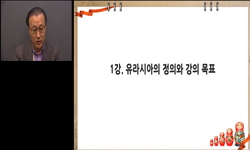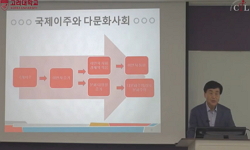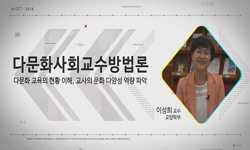역사연구는 사료의 기표가 아니라 기의를 해석해야 한다. 실증주의 형식논리에 따라 사료의 기표를 근거로 역사를 부정하는 것은 사료의 오독이자 역사 왜곡이다. 한 편의 건국신화는 불가...
http://chineseinput.net/에서 pinyin(병음)방식으로 중국어를 변환할 수 있습니다.
변환된 중국어를 복사하여 사용하시면 됩니다.
- 中文 을 입력하시려면 zhongwen을 입력하시고 space를누르시면됩니다.
- 北京 을 입력하시려면 beijing을 입력하시고 space를 누르시면 됩니다.

고조선시대 곰과 범의 역사적 실체와 토템문화의 재인식 = A Study on the Historical Reality of the Bear and the Tiger in the Gojoseon Period and on the Tradition of Totem Culture
한글로보기부가정보
국문 초록 (Abstract)
역사연구는 사료의 기표가 아니라 기의를 해석해야 한다. 실증주의 형식논리에 따라 사료의 기표를 근거로 역사를 부정하는 것은 사료의 오독이자 역사 왜곡이다. 한 편의 건국신화는 불가사의로서 역사라 하기 어렵지만, 여러 편의 건국신화를 모아서 총체적으로 분석하면 신성한 시작의 역사라는 것을 알 수 있다.
단군신화에 등장하는 곰과 범은 짐승이 아니라 곰족과 범족을 나타내는 집단 상징 곧 동물토템이다. 이 사실을 인식하게 되면, 고분벽화의 ‘신단수도’와 금동장신구인 ‘환웅천조상’을 통해 환웅은 새토템족이라는 사실도 포착할 수 있다. 그리고 토템으로 표현된 신화적 불가사의가 오히려 더 효과적인 역사 서술의 기법이라는 사실도 확인하게 된다. 집단 상징을 동물로 나타내는 토템문화는 고대 사료와 고분벽화, 장신구 등에 두루 나타날 뿐 아니라, 현대 국가의 정부 휘장을 비롯해서 대학의 마크, 명품의 브랜드 등에서도 지속되고 있는 현재진행형의 문화 현상이다. 집단 정체성을 나타내는 토템문화는 과거의 것이자 현재의 것이며 미래의 것이다.
단군신화의 곰과 범은 맥족과 예족을 나타내는 토템으로서 역사적 실체로 존재하는 종족이다. 범족인 예는 제천행사로 무천을 행할 뿐 아니라 범 토템족답게 범을 신으로 섬기며 제사를 올리는 전통을 지녔다. 곰족인 맥은 일본어에서 ‘고마(こま)’라 하여 곰을 뜻한다. 곰족은 웅녀로서 환웅과 성혼을 하여 단군을 낳았을 뿐 아니라, 중국 우하량의 여신묘에서 여신상으로 섬겨졌다. 그럼에도 곰신앙은 잠적하고 범신앙이 널리 전승되는 것은 곰족이 환웅족 문화에 적극 동화된 반면에, 범족은 쉽게 동화되지 않고 자기 문화의 정체성을 지켜온 까닭이다.
한국문화의 정체성 확립과 시각적 상징성 확보를 위해 현대적 토템문화를 회복할 필요가 있다. 일본의 도리이(とりい)와 중국의 홍등은 각각 자국문화의 정체성을 잘 드러낸다. 현재 한국은 그런 기능을 하는 문화적 상징이 없다. 한국은 전통적으로 마을에 장승과 솟대를 세워 환웅과 단군의 후손이라는 민족 정체성을 표상했다. 이러한 전통을 살려서 마을마다 장승과 솟대를 세워 문화적 정체성을 나타낼 필요가 있다.
환웅족이 곰족과 범족과 연맹을 이루어 고조선 시대를 열었다. 곰족은 동화되어 문화적 자취가 사라졌지만 범족은 동화되지 않고 일탈하여 자문화를 꿋꿋하게 지켰다. 따라서 한국문화는 천신신앙 외에 범신앙과 산신신앙이라는 다양한 문화를 전승할 수 있었다. 앞으로 외국에서 혼입해 오는 제3세계 여성들을 한국문화에 동화시킬 것이 아니라, 자문화의 정체성을 지키도록 하여 문화다양성을 확보하는 것이 바람직하다. 다문화주의를 넘어서 다중문화주의로 가는 것이 미래의 전망이다.
다국어 초록 (Multilingual Abstract)
In historical research, not the signifier but the signified should be interpreted. Denying history based on signifiers in historical records in accordance with the formal logic of positivism is a misinterpretation of the historical records and distort...
In historical research, not the signifier but the signified should be interpreted. Denying history based on signifiers in historical records in accordance with the formal logic of positivism is a misinterpretation of the historical records and distortion of history. A founding myth is a mystery and can hardly be called history. However, if several founding myths are gathered and analyzed comprehensively, you can see that they are the history of a sacred beginning.
The bear and tiger in the myth of Dangun are not animals. They are collective symbols in the context of totem culture, and the bear and tiger represent a bear tribe and a tiger tribe, respectively. Based on this recognition, you can understand from Sindansudo (神檀樹圖), a tomb mural, and Hwanungcheonjosang (桓雄天鳥像), a gilt bronze relic that Hwanung represents a bird tribe. Furthermore, you can see that mythological mysteries with totems are rather an effective method of historical narratives. Totem culture, which uses animals as collective symbols, appears not only in ancient historical records, tomb murals and ornaments but also on insignias of modern governments, marks of universities and luxury brand products. It is an ongoing cultural phenomenon. Totem culture, which represents collective identity, is a thing of the past, present and future.
The bear and tiger in the myth of Dangun are totems representing the maek tribe (貊族) and the ye tribe (濊族), respectively, both of which existed as historical entities. The ye tribe, or the tiger tribe, performed a heaven-worship ritual called mucheon (舞天) and had a tradition of worshiping the tiger as a deity and performing ancestral rites for the animal. As for the maek tribe, the Chinese character 貊 is translated into こま in Japanese, meaning a ‘bear.’ The bear tribe is symbolized as Ungnyeo, the bear woman who married Hwanung and gave birth to Dangun. Ungnyeo was also revered as the statue of a goddess in the goddess shrine at the Niuheliang site. The bear belief disappeared, but the tiger belief has been widely passed on. This is because the bear tribe actively assimilated into the culture of the tiger tribe, while the tiger tribe has maintained the identity of its culture, hardly assimilated.
Korea needs to restore totem culture in a modern context to establish the identity and visual symbol of the Korean culture. The torii (とりい) of Japan and red lanterns of China well represent the identities of the national cultures. Currently, Korea does not have a cultural symbol functioning like the torii and the red lantern. It was a tradition of Korean villages to set guardian posts and sacred poles, which represented the ethnic identity of Koreans as descendants of Hwanung and Dangun. This tradition needs to be restored by setting guardian posts and sacred poles in all villages across the country, in a bid to express the cultural identity. Totem culture can be a thing of the past, present and future.
The Hwanung tribe formed an alliance with the bear and tiger tribes as it opened the Gojoseon period. The bear tribe assimilated and its cultural traces disappeared, while the tiger tribe did not assimilate and deviated to firmly maintain its culture. As a result, various cultures, such as tiger deity and mountain deity, have been passed on in addition to the celestial god, in the Korean culture. As to women immigrating to Korea for marriage from Third World countries, it would be desirable to have them keep the identities of their cultures and thus obtain cultural diversity instead of having them assimilate into the Korean culture. It is forecasted that multilayered culturalism will replace multiculturalism.
목차 (Table of Contents)
- Ⅰ. 역사 서술의 ‘기표’와 ‘기의’ 관계의 층차
- Ⅱ. 사료의 기표에 매몰된 단군조선 부정 논리
- Ⅲ. 동물토템의 역사적 서술 기능과 사료 재인식
- Ⅳ. 동물토템으로 서술된 사료의 의미와 교차검증
- Ⅴ. 역사적 실체로서 곰족과 범족의 예맥족 문화
- Ⅰ. 역사 서술의 ‘기표’와 ‘기의’ 관계의 층차
- Ⅱ. 사료의 기표에 매몰된 단군조선 부정 논리
- Ⅲ. 동물토템의 역사적 서술 기능과 사료 재인식
- Ⅳ. 동물토템으로 서술된 사료의 의미와 교차검증
- Ⅴ. 역사적 실체로서 곰족과 범족의 예맥족 문화
- Ⅵ. 곰신앙의 잠적과 범신앙의 지속이 지닌 뜻
- Ⅶ. 토템문화의 전통과 다중문화주의의 미래
동일학술지(권/호) 다른 논문
-
- 한국유라시아연구원
- 최몽룡
- 2022
- KCI등재후보
-
흑수백산지구 소남산문화 ‘환호를 두른 구릉성 적석단총’의 요서지구 흥륭와문화로의 전파
- 한국유라시아연구원
- 정경희
- 2022
- KCI등재후보
-
하가점하층문화와 고구리 석성의 축성법 비교 연구 - 옹성과 치를 중심으로
- 한국유라시아연구원
- 서길수
- 2022
- KCI등재후보
-
- 한국유라시아연구원
- 윤병모
- 2022
- KCI등재후보




 RISS
RISS






